Bubbly and refreshing, soda water, also known as sparkling water or seltzer, is a fun alternative to still water. It’s easy to make, and great for homemade sodas, mocktails, and cocktails.
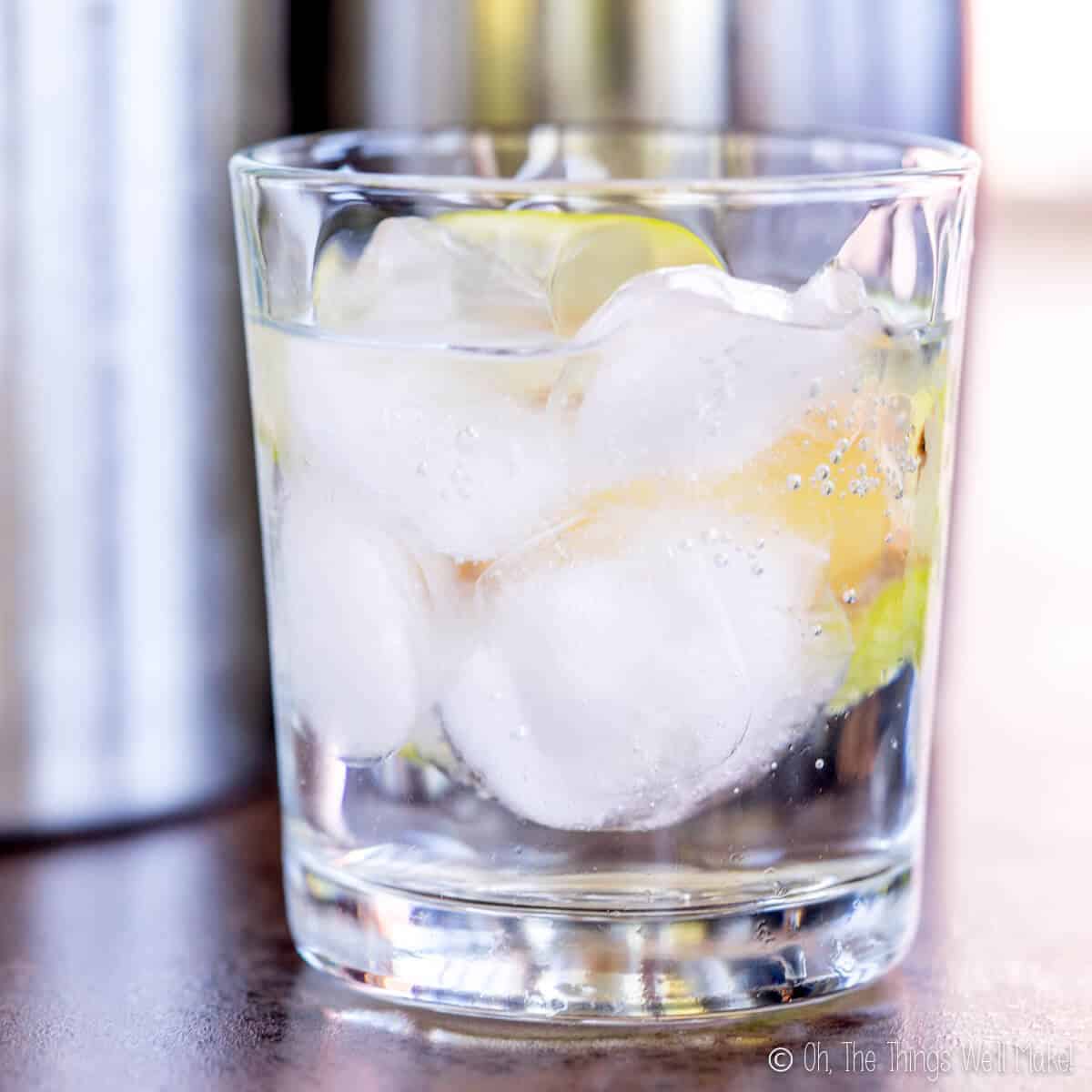
What is soda water?
Soda water is a type of unsweetened carbonated water that is commonly served worldwide. It can either be a naturally carbonated mineral water, or water with carbon dioxide added to it. Here in Spain, it’s called “agua con gas.” In the United States, it isn’t as commonly served with meals as it is here in Europe.
You can normally find soda water in the bottled water section, though, labeled as “sparkling mineral water,” “soda water,” or “seltzer water.” Perrier and San Pellegrino are familiar brands you can look for.
Club soda vs. sparkling water
Club soda and seltzer are both types of carbonated water. Sparkling water or seltzer water is really just unflavored water with carbonation or carbon dioxide added. It doesn’t have any additional sweeteners or flavors.
Club soda is very similar to soda water but is normally saltier tasting. Neither are sweetened, but club soda has added minerals for flavor. By adding minerals, club soda is meant to imitate a naturally carbonated mineral water.
While “soda water” typically refers to seltzer water, if you order “soda water”, there is a chance you may get club soda instead. That’s why its best to specify either club soda or sparkling/seltzer water if you specifically prefer one over the other. I personally don’t like the salty flavor of club soda and prefer normal seltzer water.
Tonic water vs. club soda
“Tonic” or “tonic water” is yet another type of carbonated water with added flavors. It has a very distinctive bitter flavor from added quinine, a bitter substance that was originally used as an anti-malarial medicine.
It is said that the “gin tonic” was invented as a way to make the bitter anti-malarial medicine more palatable. Modern tonic water has less quinine, though, making it less bitter than the original medicinal varieties. It also has the addition of sugar.
Why make it?
While it’s simple enough to go out and buy seltzer water, I prefer to make it myself at home. By making it at home, I can avoid the unnecessary plastic bottles. While there are glass bottles available for sale, they tend to be a lot pricier than if you were to make the sparkling water yourself.
Plus, as always, by making it yourself, you can control the ingredients. So, you can use whatever filtered or mineral water you prefer.
How to make sparkling water
There are several ways to make your own carbonated water.
SodaStream
Relatively recently, a modern soda water maker has come on the market. It’s known as a SodaStream. The SodaStream is an attractive and convenient way to make seltzer water. It comes with relatively large gas cartridges that can make around 60 liters of sparkling water before needing to be changed.
While I think it’s a great option and very convenient, there are a few reasons I chose not to buy the SodaStream. For one, I didn’t want to have yet another “machine” sitting on my kitchen counter.
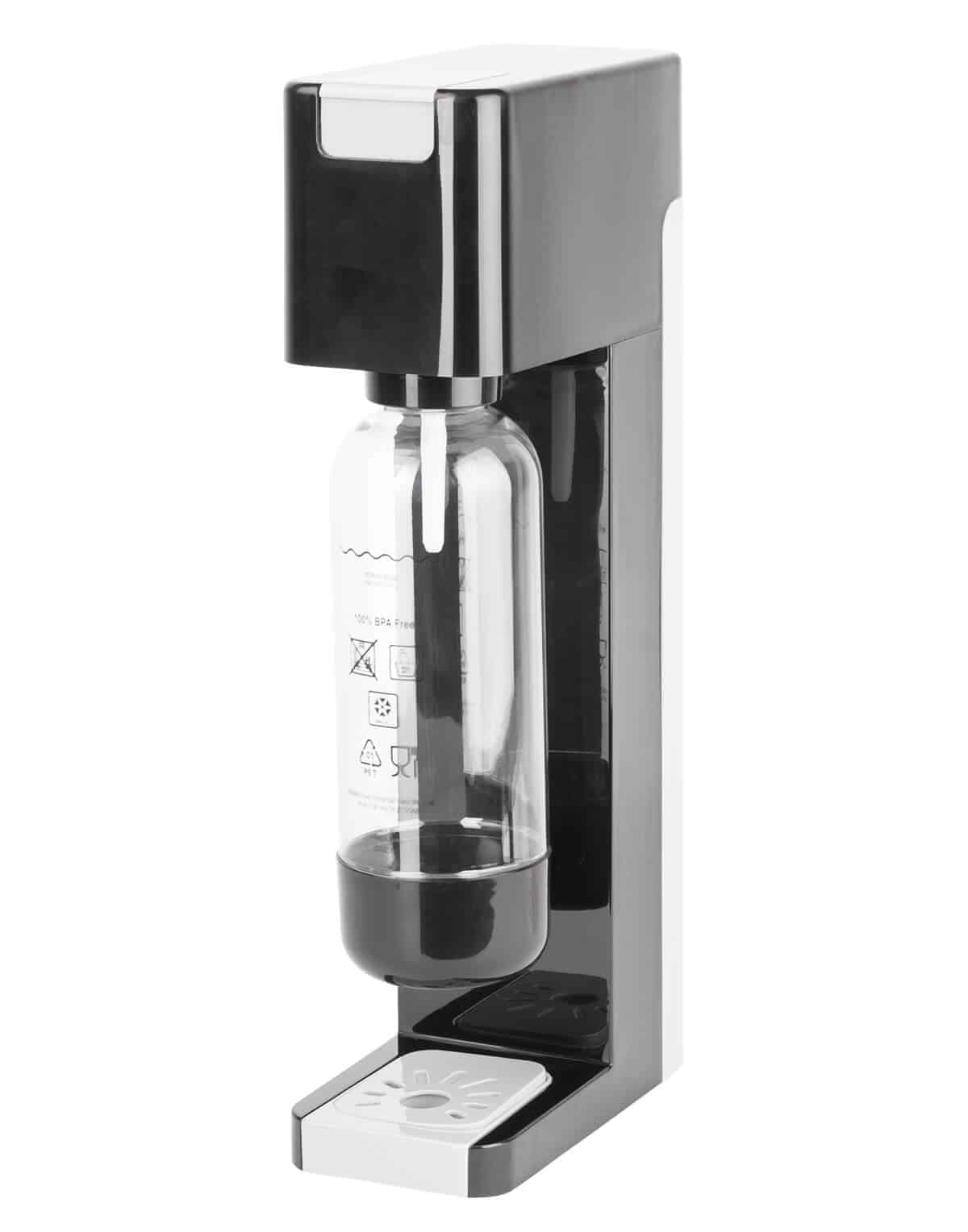
I also didn’t like the fact that most of the versions of the machine used plastic for carbonating the water. That said, I did find a glass carafe version with attractive carafes for storing and serving the carbonated water. It’s quite a bit pricier than the original models, though.
Lastly, the cartridges aren’t that easy to find here in Spain. They end up being harder to find and more expensive than cartridges for a seltzer bottle.
Soda siphon/seltzer bottle
I chose to buy a stainless steel seltzer bottle (also known as a soda siphon) instead.
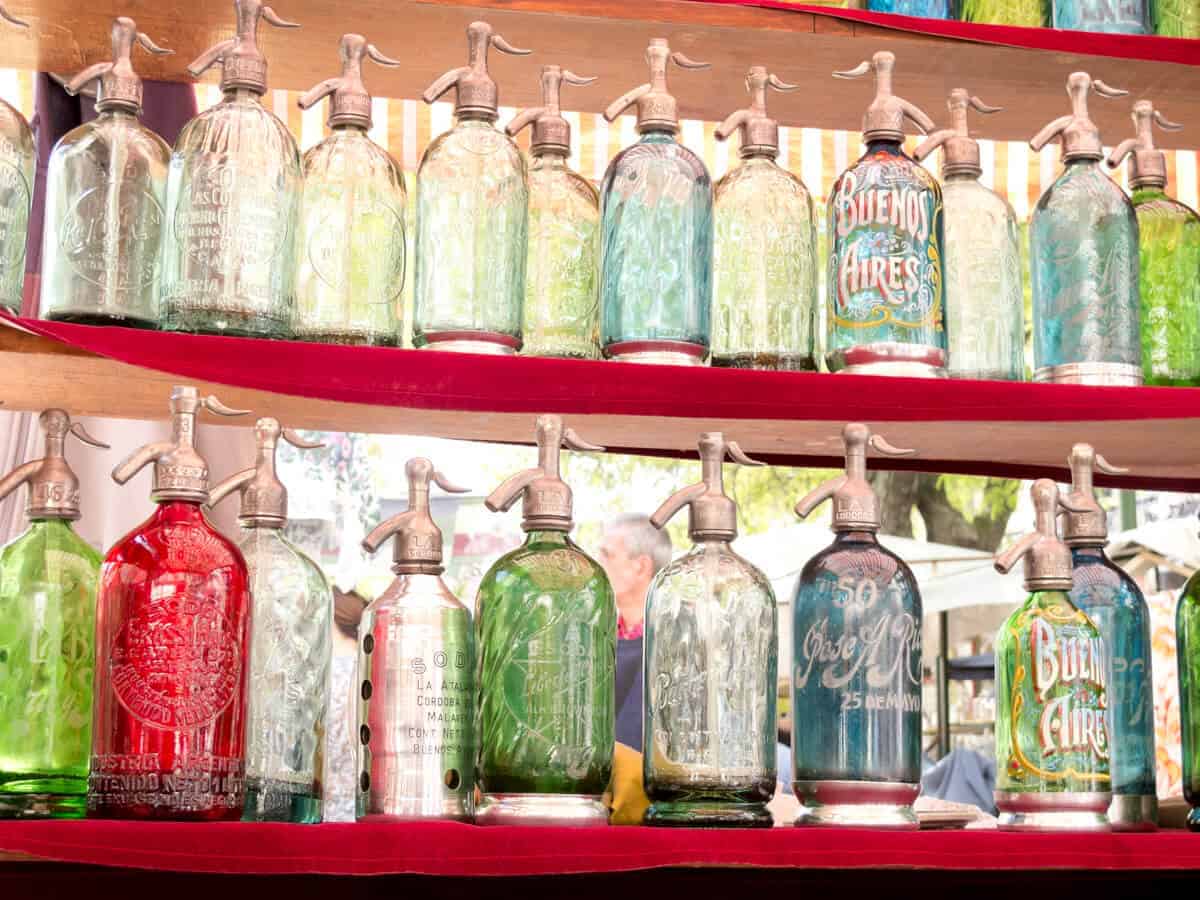
I remember my dad having one of these when I was a kid. Years later, I tried to find one, but they weren’t easy to find outside of antique shops. (I wanted a new, clean and hygienic one not a vintage model for display.) Luckily, with the coming of the internet age, I was able to find one pretty easily.
When you buy a seltzer bottle, you also have to buy soda chargers. Soda chargers are little pressurized cartridges that you screw into the soda bottle that’s been filled with cold water.
I’ve gotten used to using my siphon. It doesn’t take up a lot of room, and it looks nice, but I have to admit that it does cost me around 50 cents to make each liter of sparkling water.
At some point, now that I have everyone in the house addicted to soda water and my homemade sugar-free “pop”, I may have to look into a bulk solution for carbonating water. I found this post which has piqued my interest, and made me consider better ways to make a lot of carbonated water.
Of course, if you’re only going to be making an occasional fizzy drink, I think a soda siphon is a perfect place to start!
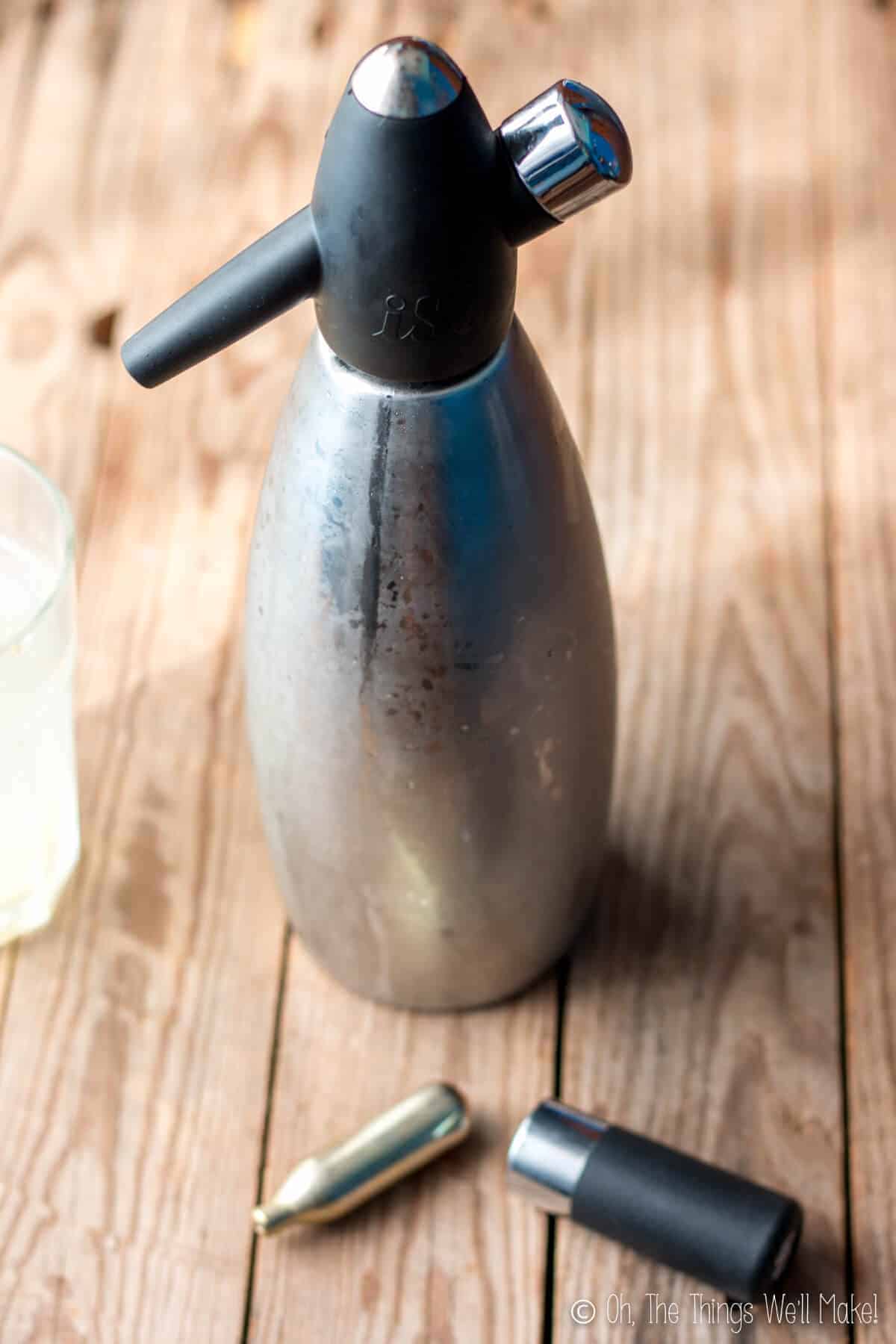
Ingredients
Well, as you may imagine, the main ingredient is water! It’s really the only ingredient you need. That is, of course, unless you consider the carbon dioxide gas as another ingredient.
If using a SodaStream, you’ll want their gas refills. For a seltzer bottle (water siphon), you need gas chargers meant for soda water. These are different from the gas chargers used in whipping siphons used for making whipped cream and mousses.
How to use a soda siphon
While it’s best to follow the directions that came with your particular model, these instructions should be pretty universal to most soda siphons.
Filling the bottle with water
Before beginning, press on the lever to make sure that there isn’t sparkling water already in the bottle. You don’t want to add more gas to water that has already been carbonated.
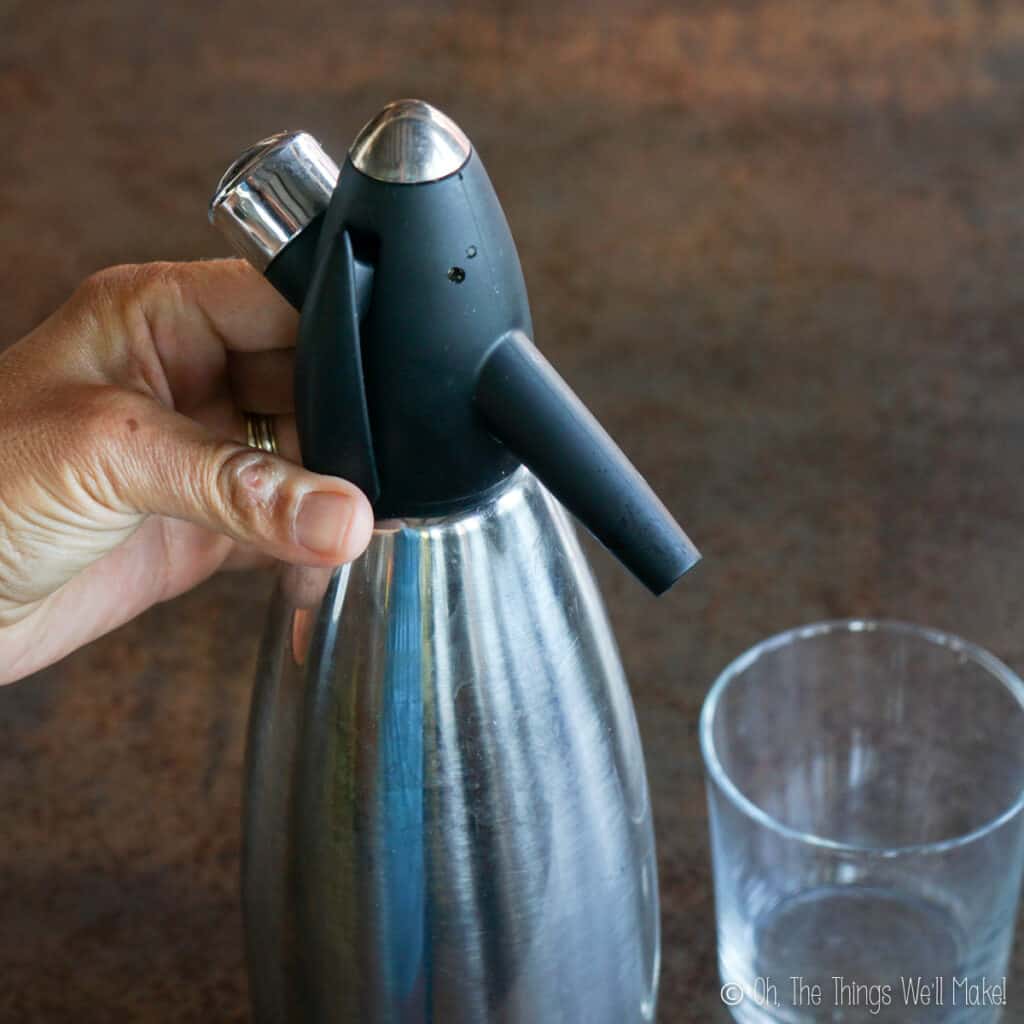
Press on the lever. 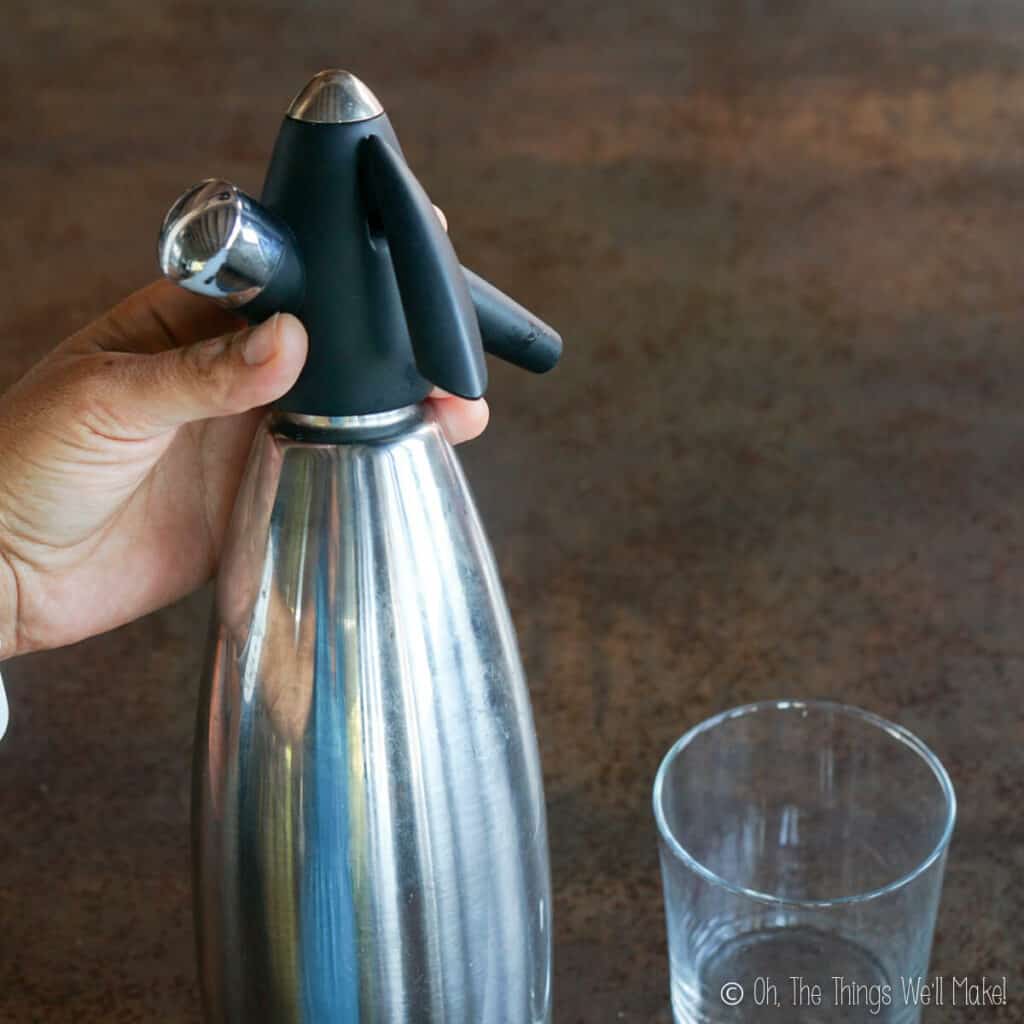
Screw off the top. 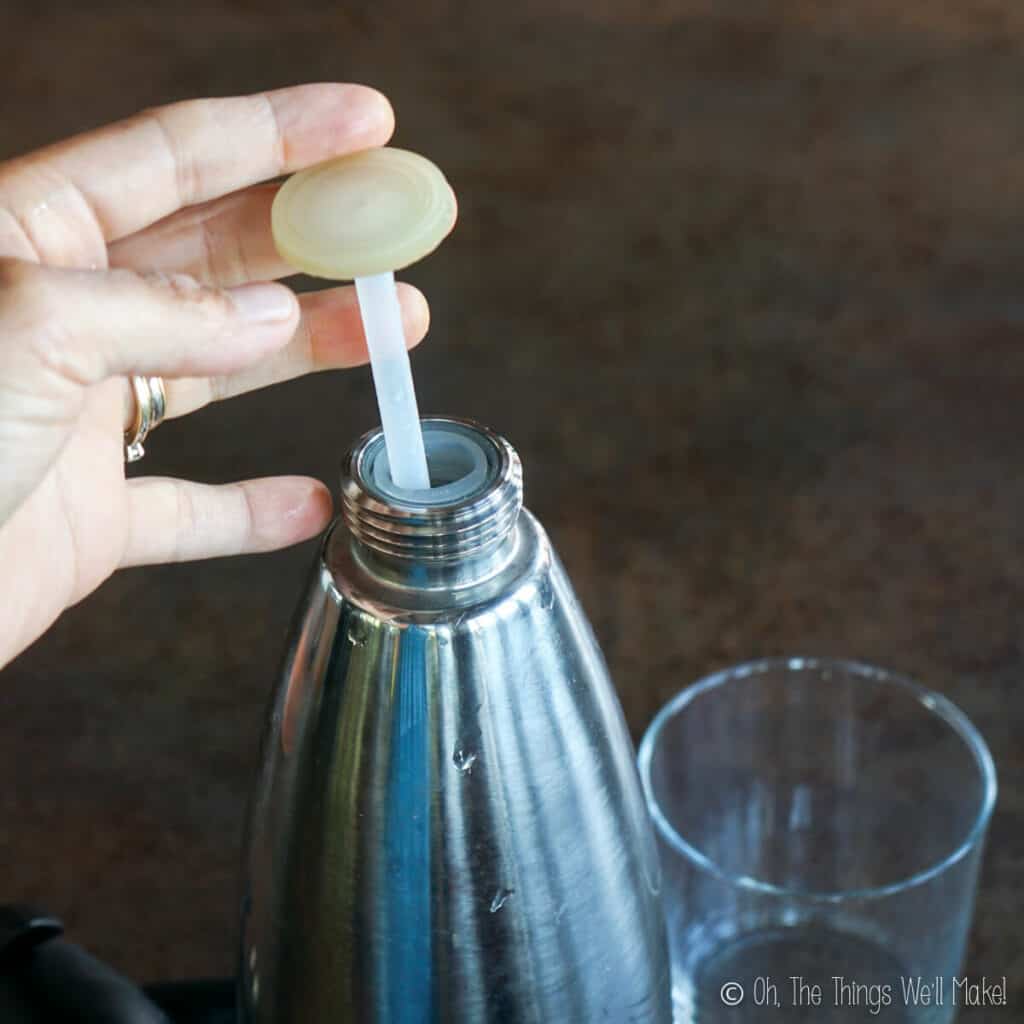
Remove the tube. 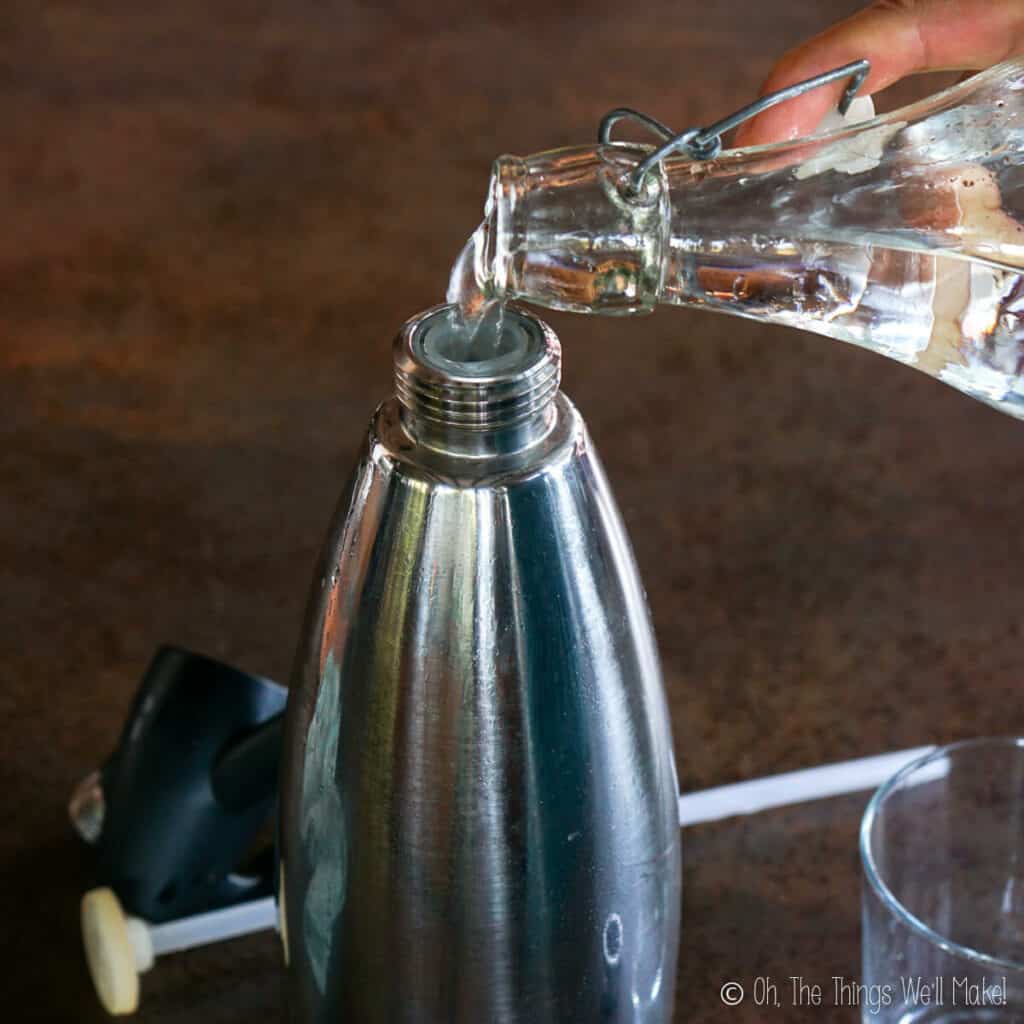
Fill with cold water.
Open the bottle by screwing off the top portion. Then, remove the tube in the center of the bottle.
You can now fill the bottle with cold water. Cold water is best because warm water doesn’t achieve the same level of carbonation.
When the water starts to come out of the top of the bottle, stop filling. If and when the level of the water falls, do not add more water. Most siphons are made to prevent overfilling by spitting out the excess water as you fill the bottle.
Add the tube back into the center of the siphon. Then screw the top of the siphon back on tightly.
Adding the gas
First, remove the decorative cover on the head of the siphon, opposite the spout, by unscrewing it. This is where you will screw on the gas charger.
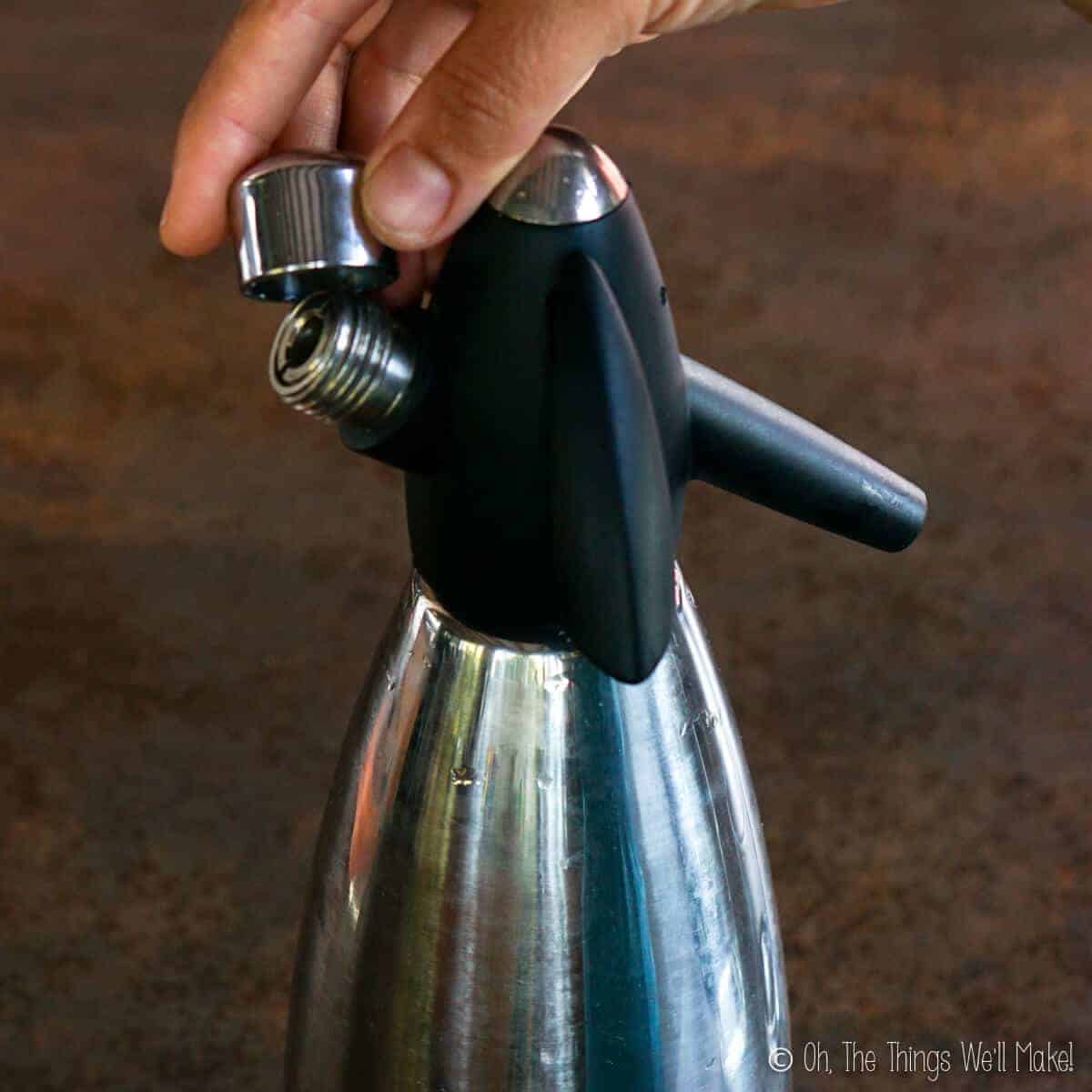
Take a gas charger and place it into the holder with the tip facing outwards. (See the photos below.) Screw the holder onto the lid of the siphon. Doing so will pierce the tip, releasing the gas. (You should hear the sound of the gas being released.)
Next, give the bottle few shakes to help dissolve the gas into the water. My model recommended shaking the bottle at least 6 times. Once you’ve shaken the bottle, you can remove the charger by unscrewing the holder. (Again, it’s normal to hear a sound as you remove it.) Screw the decorative cap back on.
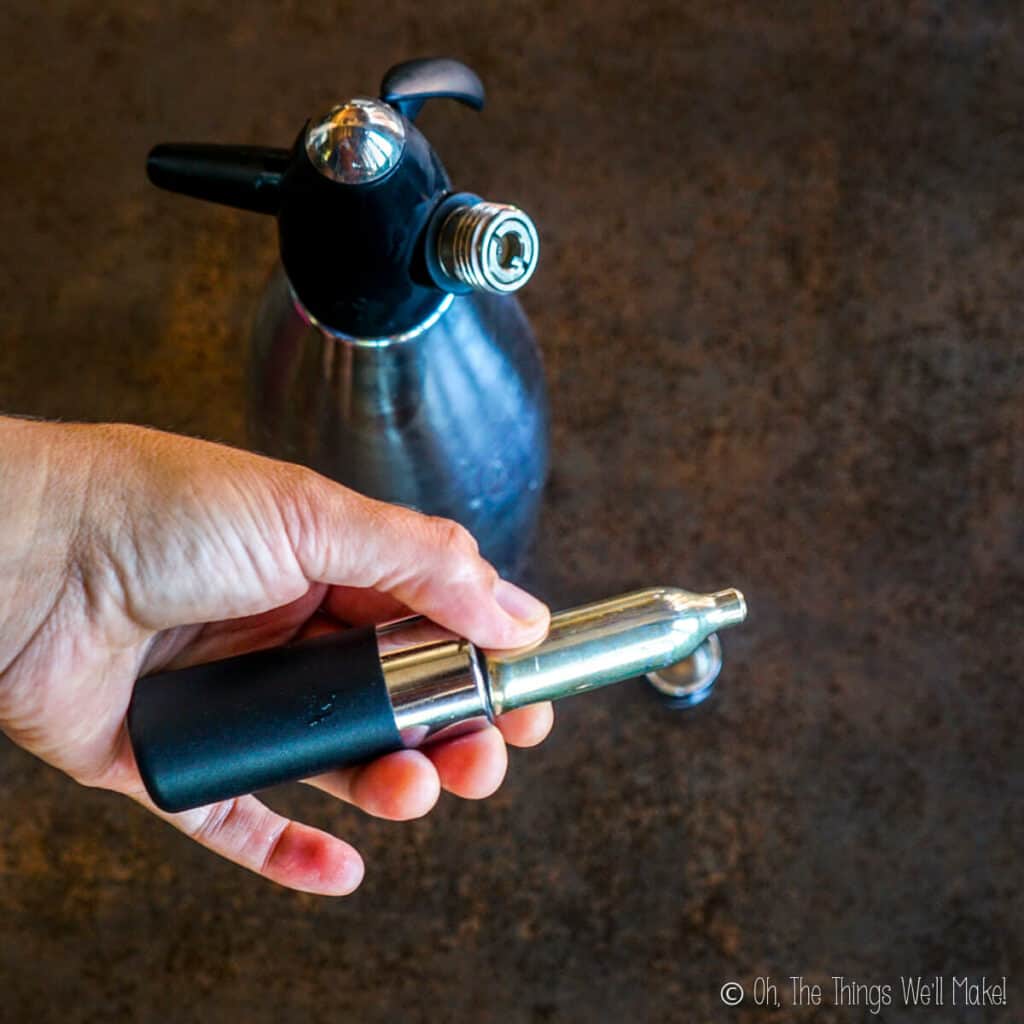
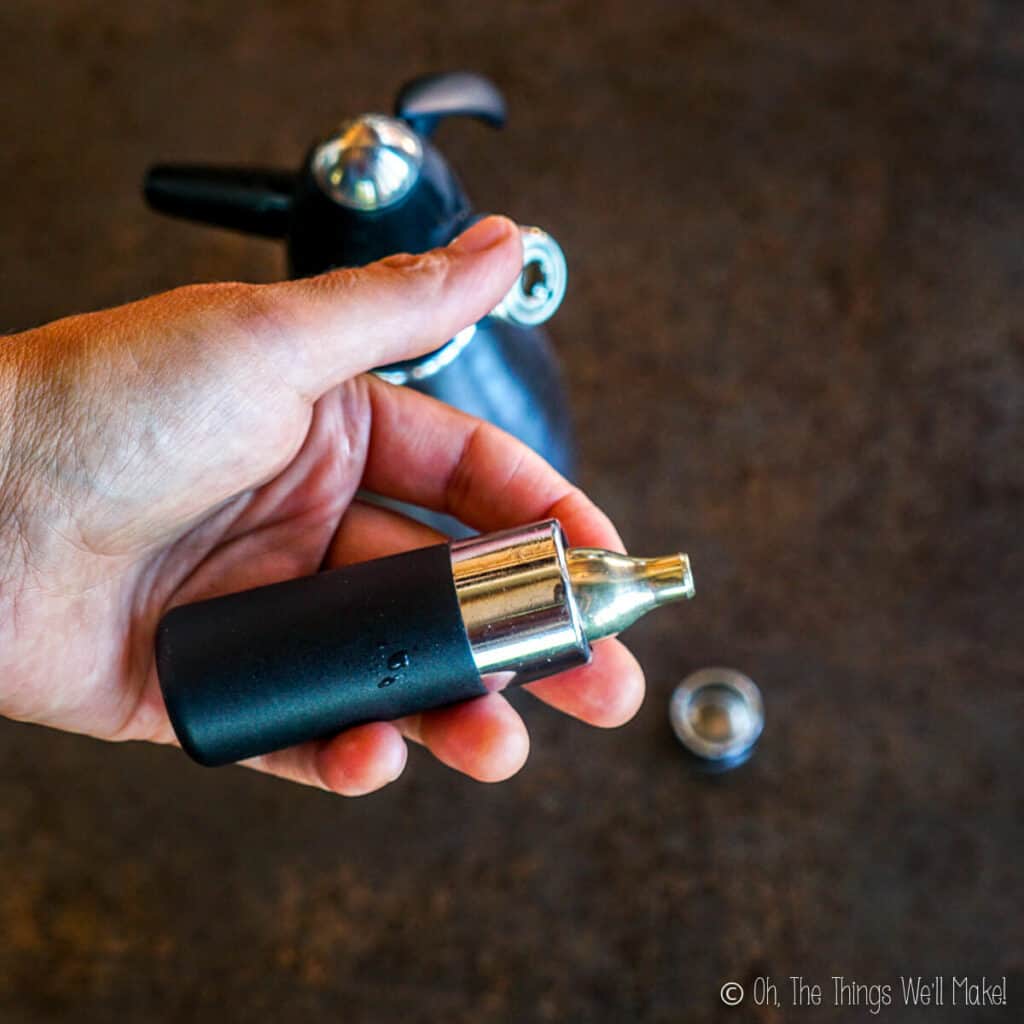
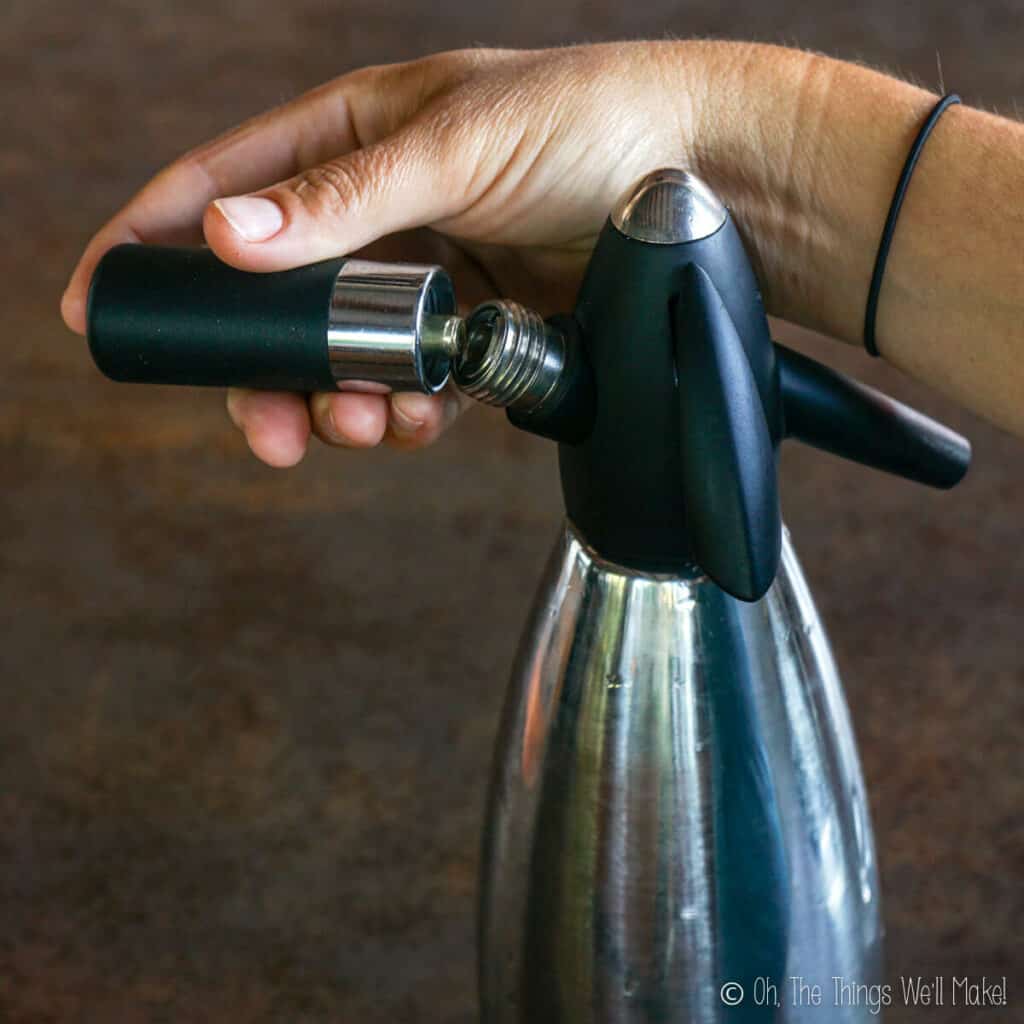
Screw the holder in place on the top of the soda siphon. 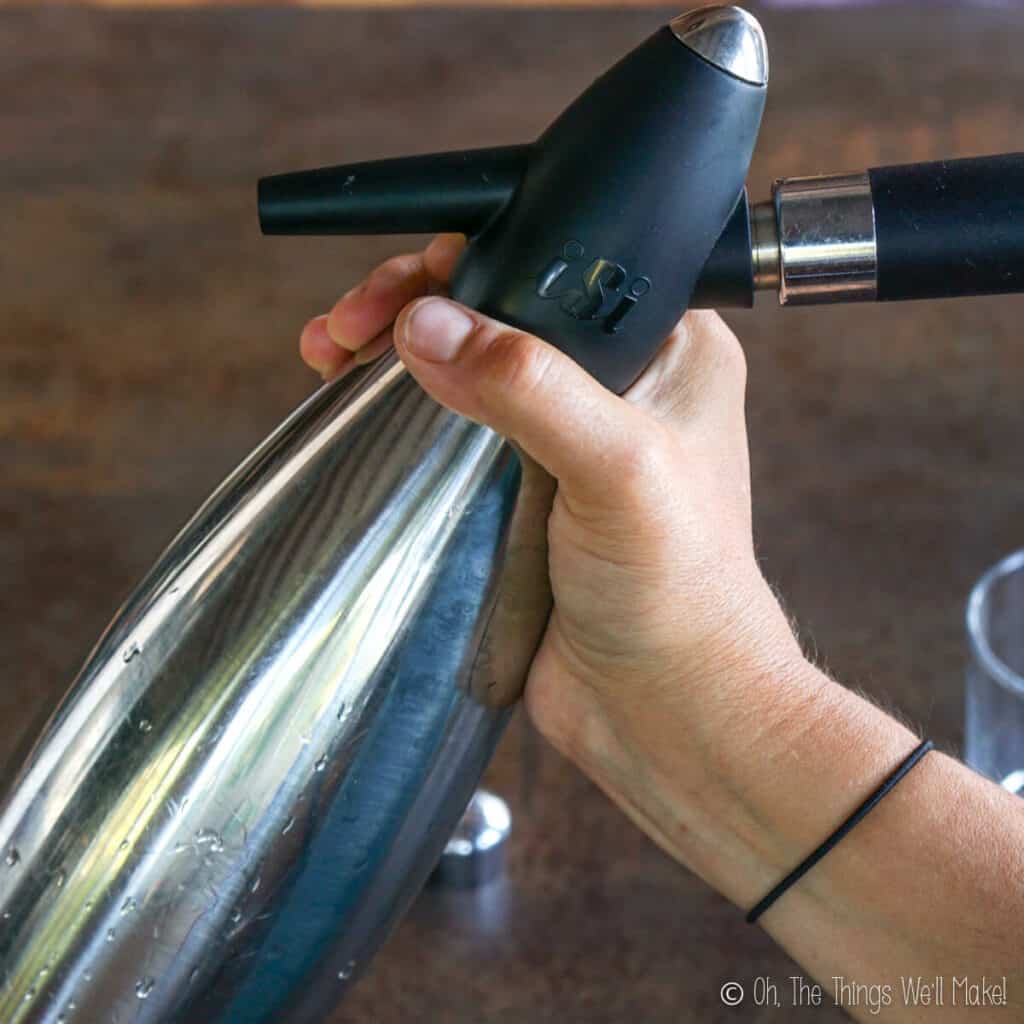
Shake the siphon to disperse the gas. 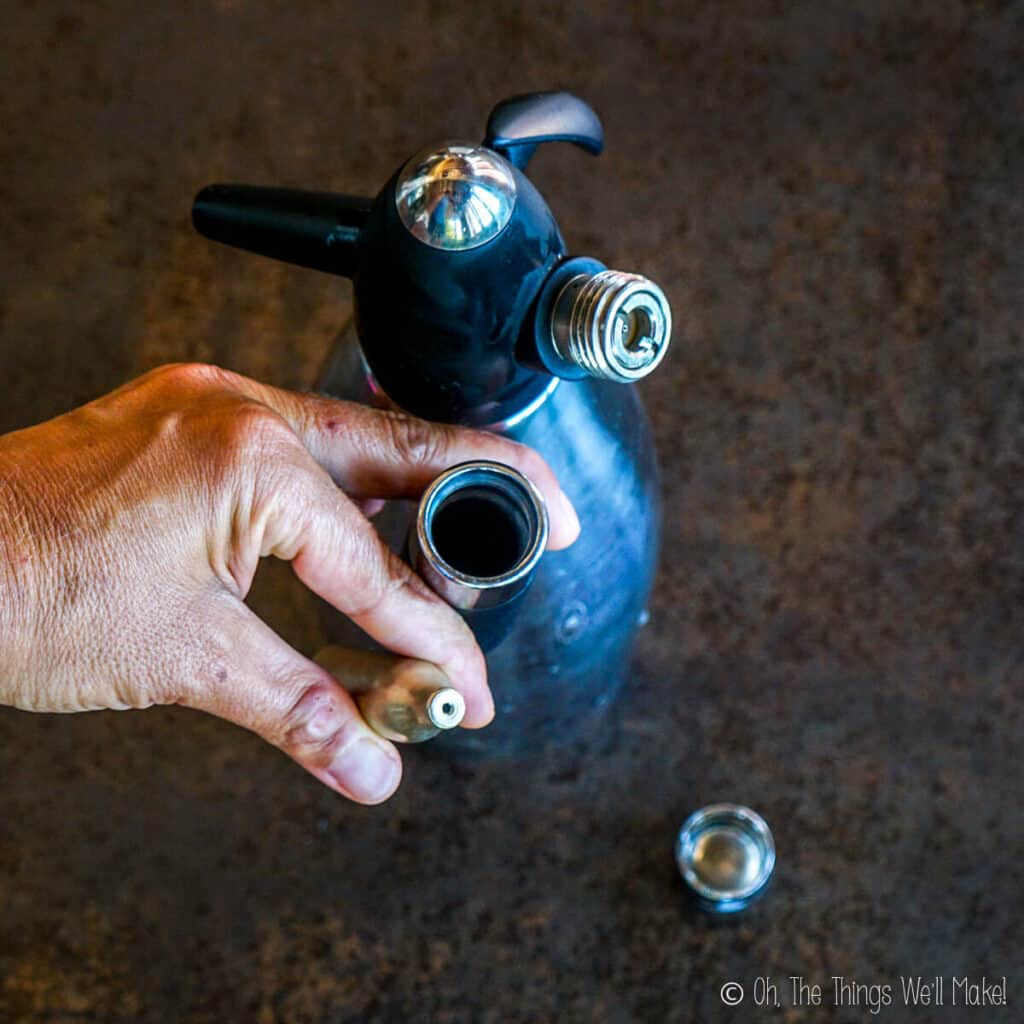
You can now serve the water by pressing on the lever. (Make sure you first place a glass under the spout.) Press gently at first as there may be quite a lot of pressure when you first dispense the water.
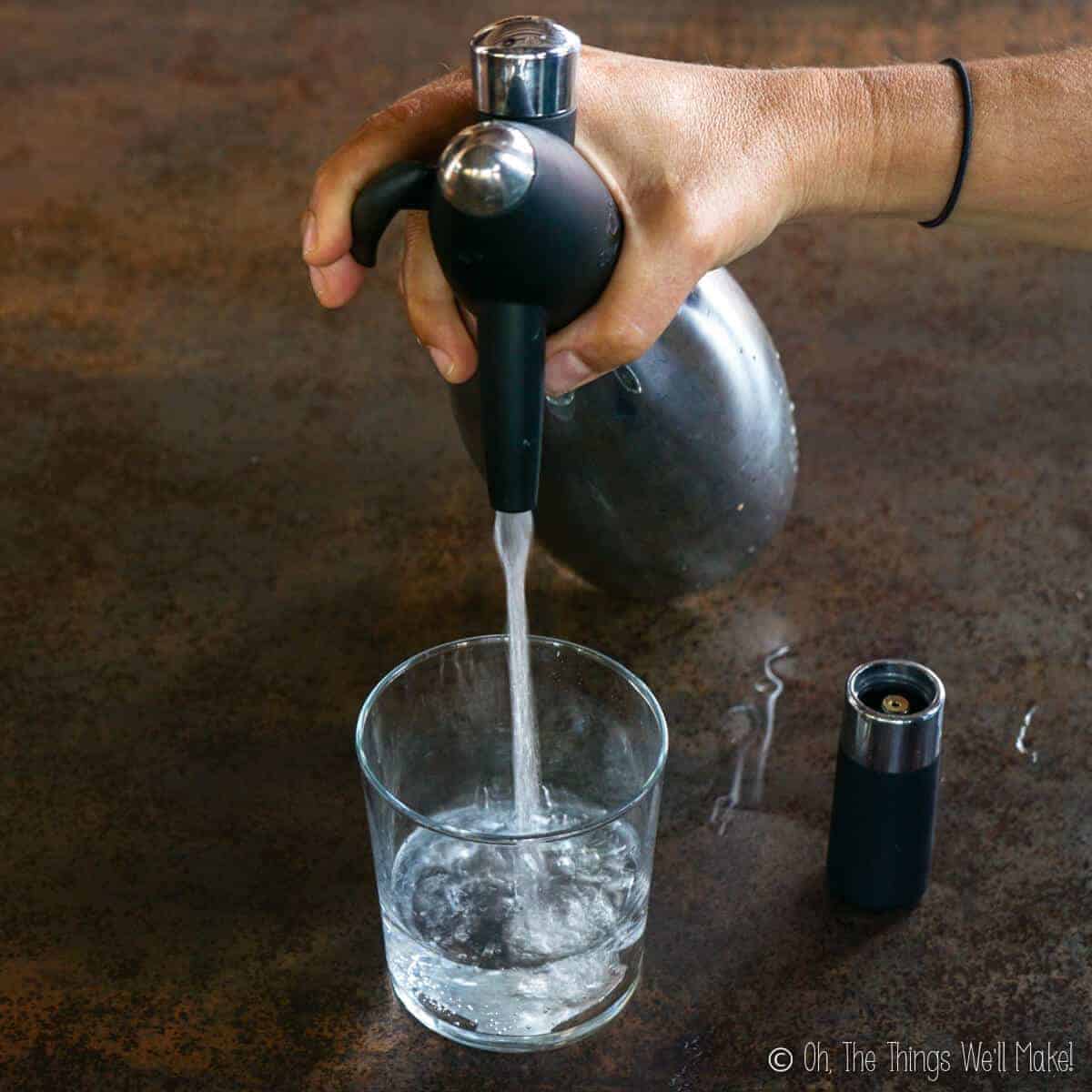
Video
Recipes to make with soda water
Homemade Ginger Ale – Sugar Free and Paleo
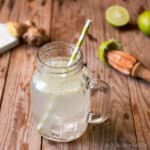
Healthy Paleo Red Pop
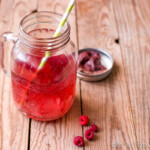
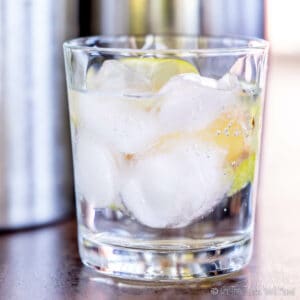
Soda water
Equiment
- soda siphon
Ingredients
- 1 liter water
- 1 soda charger
Instructions
- Before beginning, press on the lever to make sure that there isn’t sparkling water already in the bottle. You don’t want to add more gas to water that has already been carbonated.
Filling the bottle with water
- Open the bottle by screwing off the top portion. Then, remove the tube in the center of the bottle.
- Fill the bottle with cold water. When the water starts to come out of the top of the bottle, stop filling. If and when the water level falls, do not add more water. Most siphons are made to prevent overfilling by spitting out the excess water as you fill the bottle.
- Add the tube back into the center of the siphon. Then screw the top of the siphon back on tightly.
Adding the gas
- Remove the decorative cover on the head of the syphon, opposite the spout, by unscrewing it. This is where you will screw on the gas charger.
- Place a gas charger into the holder with the tip facing outwards. Screw the holder onto the lid of the syphon. Doing so will pierce the tip, releasing the gas. (You should hear the sound of the gas being released.)
- Give the bottle several shakes (at least 6) to help dissolve the gas into the water.
- Remove the charger by unscrewing the holder. (Again, it's normal to hear a sound as you remove it.)
- Screw the decorative cap back on.
Serve the soda water
- Place an empty glass under the spout.
- You can now serve the water by pressing on the lever. Press gently at first as there may be quite a lot of pressure when you first dispense the water.
 Español
Español
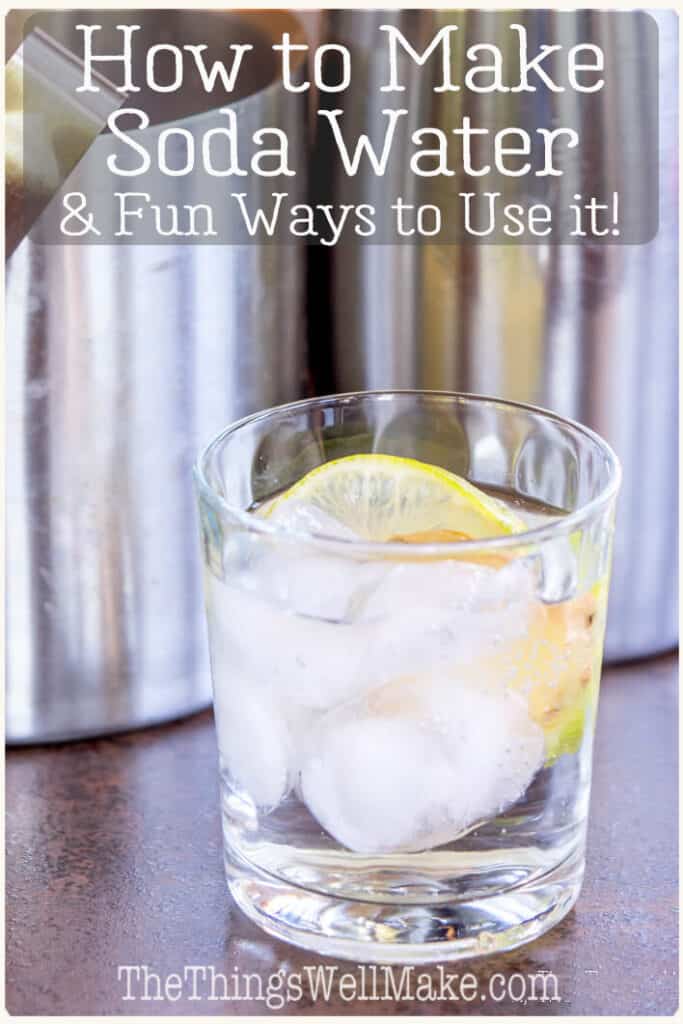
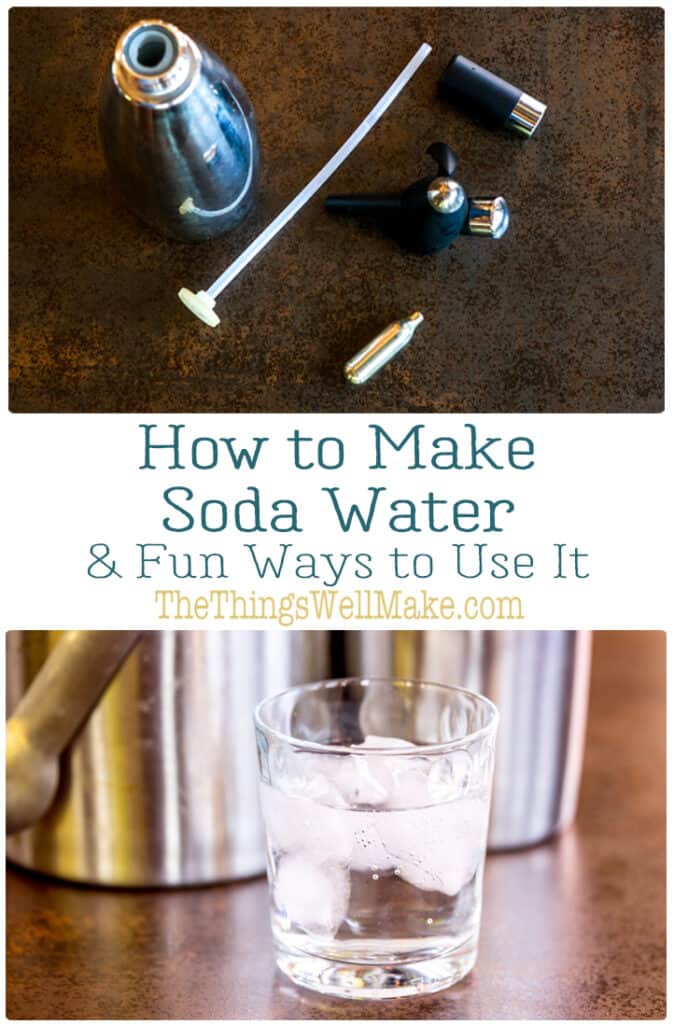
 Pickled Ginger for Sushi (Gari)
Pickled Ginger for Sushi (Gari)
tit
you dont know your ass from your elbow…….. soda water has sodium bicarbinate
Tracy Ariza, DDS
Historically, yes. Sodium bicarbonate was added to soda water to raise the pH and help stabilize the addition of CO2. Nowadays, though, it doesn’t generally have added sodium bicarbonate (but, yes, it could.) The terms sparkling water and soda water (or water used for soda) are generally used interchangeably now.
Charles Miller
It’s not ‘soda’ water unless you add soda tablets – these are hard to come by now, but the recipe is 2 parts bicarbonate of soda to 1 part tartaric acid, shake a jar up and use about half a teaspoon or less depending on size of bottle and taste, then add you gas, and shake vigorously for 15 seconds – a different drink and one that improves blended whiskey and cognac as the salts bring out the flavours and the water is petilent and not overtly fizzy. If this isn’t added, it’s just slightly fizzy water, not soda. The Victorians had a wider range including Potash and Vichy, but these were intended as mineral waters not mixers.
Rgds from the Old Country, Charles Miller.